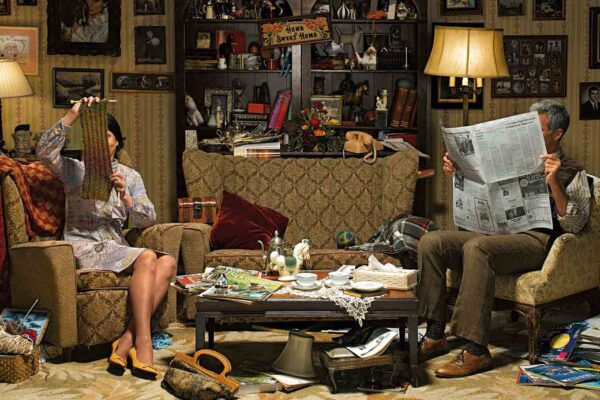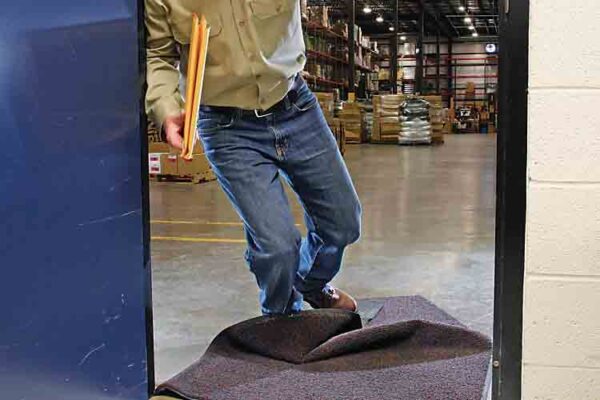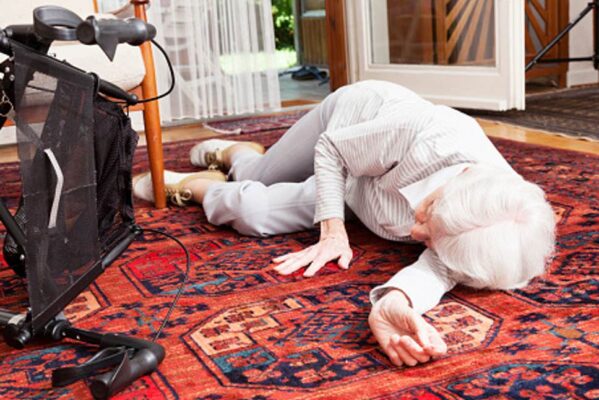As many as 30% of over-65s will fall during each year costing the NHS a whopping £2.3 billion each year. This can cause minor or serious injury but more importantly seriously affects self confidence in older, disabled or less mobile patients.
Rising numbers of elderly people are being admitted to hospital following falls. In the last 4 years alone the rate has risen 9%. There are many reasons why people fall and quite a few simple things can aid prevention.
Many older people with mobility issues assume that there is not much they can do to prevent falls. However, despite their fears falls do not need to be an inevitable part of growing older. It is essential for the family and sometimes an expert to look at all the potential hazards. It is worth watching the person at home to see them moving around to work out the weak points. It is also worth noting at what time of day they fall.
Resume of what can be easily done
1. Simple improvements to the home can help it more fall-proof.
2. Regular Exercise can help improve muscle strength and balance.
3. Regular eye tests to make sure that your eyes are in good health and that the prescription for glasses is correct (Eye tests are free over 60)
4. Make sure you have good footwear
Common causes of Falls
There are many falls that happen in the home, that are easily avoidable.
Take a look around the house and see if there are things that can easily be remedied.
– Is there sufficient lighting in the corridors and stairwells?
– Are they lots of rugs to catch your foot on?
– Is there a lot of clutter on the floor?
– Do you have sufficient handrails at awkward places?
– Do you have a way of safely getting to the toilet at night?
If you need help deciding how best to correct any problems it is sensible to ask an Occupational therapist to come in to assess your needs. This can be arranged through your GP. You can also find a private occupational therapist through the website
https://www.rcotss-ip.org.uk/find


The OT will come to your home and assess your needs and see where any dangers lie. They will see how you move around your house and transfer from sitting to standing get in or out of your bath and how you safely get to the toilet.
They may then suggest various aids such as a toilet raise, bathing aids, a commode by your bed, extra handrails etc.
Most of these will be supplied and sorted by them.
There are many additional things you might want to purchase privately which are superior in quality.
If you or your relative is walking around the home grabbing on to pieces of furniture then it is time to look at their safety in the home. It may be sensible to look at putting up grab rails for them to hold at certain places in the home.
Checking out your staircases
Stairs
Stairs are a particularly common area for falls so it is very important to assess the safety here.
Putting up a second rail on the staircase may be advisable so they can hold on with both hands.
Any extra rails on the staircase should ideally be one continuous piece of wooden handrail so they can keep both hands on it at all times. If this is not possible extra hand holds can be fixed to the wall or newel post at each level of the stairs to help them up the last step and round the next corner.
Single step
If there is one step between living area and kitchen it is best to put up a rail or hand hold attached to the wall making sure it is attached to a wood joist and not just plasterboard.
It is best to place a vertical rail. To work out where to put it put the patient at the bottom of the step facing up the step then place the rail vertically on the wall with them holding the rail at the bottom end, position the rail on the wall at elbow height. Mark the spot and attach securely vertically to the wall.
Several steps
The rail can be attached to the wall at the same angle as the steps.
Also look at the Front and Back door entrances and see where they might need a rail to help them getting in and out of the house safely.
Rails that are attached to the wall should be attached either to wood or a solid wall. Plasterboard walls may not be strong enough so you may need your builder to add a backing board to secure the rail securely.
Bathrooms are also a big potential for falls. A rail may need to be added to provide support while they carry out the processes of washing or getting on and off the toilet.
Buy a rail of around 300-450 mms and then with the person holding the middle of the rail place it up on the wall vertically at elbow height and slightly in front.
Bathrooms may need vertical rails and horizontally placed rails so they can use them for different purposes. Horizontal rails are good to hold on to while dressing or while showering.
Funding any Minor Alterations
If you live in England and the recommended alterations cost less than £1,000, social services will often provide and fit these free of charge. However, if your relative has been allocated a personal budget to manage their own care, alterations might be funded out of this.
In Northern Ireland and Scotland, local authorities might charge for minor alterations.
In Wales, local authorities might charge for minor alterations but, in line with charging policies for non-residential care, any charges made must be ‘reasonable’ and have regard to an individual’s ability to pay. For small-scale adaptations, people may be able to apply for funding (up to £350) under the Rapid Response Adaptation Programme, which is administered by Care and Repair Cymru. Your relative must be referred for this by a health or social care professional.
Major adaptations
If the OT recommends major adaptations (costing more than £1,000), your relative can apply for a grant from their local council to help with costs.
All local authorities in the UK offer grants to help disabled people make necessary modifications to their homes, which will enable them to live more independently. These could be adaptations that make the property easier or safer for the person to use and get around in.
In England, Northern Ireland and Wales, this is called a Disabled Facilities Grant (DFG).
In Scotland, there is a similar grant called a Scheme of Assistance. The process for application and funding is broadly the same as for the DFG.
Ref Which magazine
Exercises to help prevent falls
There are numerous exercises on this website. Aim to do strengthening 2-3 times a week and balance exercises as often as possible preferably daily even just for a few minutes each day.
Activities that improve strength in your legs arms back and shoulders are particularly important. They can make it easier to get out of a chair as well as helping your balance and posture.
There are many exercises that can be done at home including plenty that can be done sitting in a chair, which will improve strength, coordination and balance.
If you are concerned about walking unaided get a physiotherapist to recommend a walking aid.
Eyes and Ears
Eyesight can change as we get older and poor eyesight can lead to a fall.
Regular tests can also check for important conditions of the eyes such as macular degeneration, cataracts and glaucoma.
Ears can also affect your balance. Talk to your GP if you notice any change in hearing which may be a simple problem such as ear wax build up or ear infection.
Shoes
Problems with feet or footwear can also affect balance and increase the risk of falls.
Make sure the shoes fit well and that they support your feet.
Never walk indoors with bare feet socks or tights.
Avoid sandals or high heels.
Make sure that they close properly and that the velco closure still works or that they are tied correctly.
Keep nails short or if you are unable to do this go either to a chiropodist or go for a pedicure.
Fear of falling
If your balance is not as good as it was, it is natural to have a fear of falling.
You can ask your GP to get a falls risk assessment done which will highlight the problems and they can advise you what actions to take.
It is also sensible to get a pendant alarm which you wear at all times which can alert relatives, neighbours or emergency services if you fall.
There are also videos here that can show you sensible ways to try and get yourself up from the floor.

